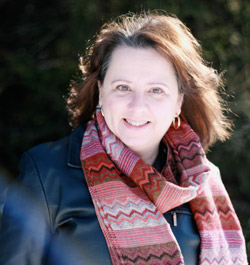Spiderman & the Little Stone Angel, Photo by: Michelle S. Scott
Contemplative (Adjective): To allow for reflection and manifestation (expression) of deep thoughts, involving prayer or meditation and focusing on the divine presence or higher power, within.
A person at the end of their life is leaving their world, including family and friends and many aspects that make up their life. They are also going somewhere that they can’t come back from and the information about their destination is unavailable and unknown; sometimes shrouded in religious or cultural traditions and beliefs, but ultimately unknown. Contemplative End of Life Care (CEOLC) recognizes that dying is a sacred rite of passage and is one of the true human experiences we will all share. CEOLC further asserts that death/loss/grieving is an opportunity for growth and healing.
When a cure is no longer an option, care is what is necessary. CEOLC goes beyond the current medical model of pain and symptom management. Healthcare professionals are concerned with comfort care at end of life and the physical pain that patients feel is well monitored and controlled. The reality is that there is more than physical pain. Palliative Support professionals now include questions such as asking about anxiety, fear, and depression.
The way that I was taught Contemplative End of Life Care @ the Institute of Traditional Medicine (ITM website) incorporated Buddhist teaching. The meditative component was highlighted; from focusing on the breath and matching it together with a person who is dying, to practicing loving/kindness meditation or Mindfulness Based Stress Reduction with caregivers. Stages of dying were taught, for instance family may be concerned with the cold hands and feet that their loved ones experience near the end of their lives. This is because the body, in its wisdom, recognizes end of life (when organs are slowly shutting down) and redirects blood flow to the vital organs located in the middle of the body; this is a natural process.
In the CEOLC approach, integrative and complementary therapies are incorporated to ease pain and suffering. Gentle massage, music, low lighting, acupressure, healing touch, aromatherapy, and recording life stories are some of many available options. A person who is dying and their families may also wish to create their own vigils or rituals. The vigil can be supportive and reflect the life and history of the dying person and can include music, silence, prayers or meditations, candlelight, sunshine & being outdoors in nature, familiar objects, flowers, photographs, animals & children, or whatever is wished for. Vigils are as individual as the people that create them.
Living until the last breath offers opportunities, one of which is leaving a legacy. Dr. Ira Byock (irabyock.org), in his book Dying Well – Peace and Possibilities at the End of Life, describes five focuses for legacy-building:
- I love you
- Forgive me
- I forgive you
- Thank you
- Good bye
Connection & understanding. Relationships. Love. These qualities are a priority if we live mindfully; in the moment, being present. Mindfulness is beneficial at end of life, for the people dying, as well as their families and friends. To encourage legacy, consider asking the person dying “How would you like to be remembered?”
Contemplative End of Life Care also considers the notion of suffering and comfort. It is believed that “a good death” not only comforts the living by helping to care for their dying, but also helps the consciousness (soul, essence, energy, vital force) transition into the next realm of being.
May you be well,
Michelle Suzanne Scott


